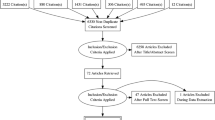Abstract
Insights into intracellular calcium regulation and contractile state can be accomplished by changing pacing rate. Steady-state increases in heart rate (HR) (force-frequency relationship, FFR), and introduction of extrasystoles (ES) (force-interval relationship, FIR) have been used to investigate this relationship. This study focused on the recirculation fraction (RF) and potentiation ratio (PR), obtained from the recovery of the FFR and FIR. These parameters may provide insight on intracellular Ca2+ regulation. Left ventricular (LV) pressures and HR were assessed in anesthetized canines (n = 7). Intrinsic data were collected prior to and following HR increases to 150, 180, and 200 bpm, as well as following delivery of an ES at 280 ms. The RF was calculated as the slope of dP/dtmax(n + 1) vs. dP/dtmax(n), where n = beat number. The PR was calculated by normalizing dP/dtmax from the first beat following the ES (or the last paced beat) to the steady-state dP/dtmax. The RF due to an ES was not significantly different than that from a HR of 200 bpm. The PR from an ES was not significantly different than from a HR of 150 bpm. The impact of an ES delivered at an interval of 280 ms produces a PR similar to that from a HR of 150 bpm; yet, it recovers similarly to the termination of pacing at 200 bpm, eliciting a similar RF value. The method of measuring RF by an ES versus an increased HR may provide a safer and more feasible approach to collecting diagnostic information.




Similar content being viewed by others
References
Bhargava V, Shabetai R, Mathiasen R, Dalton N, Hunter J, Ross J. Loss of adrenergic control of the force-frequency relation in heart failure secondary to idiopathic or ischemic cardiomyopathy. Am J Cardiol 1998;81:1130–7
Burkhoff D, Hunter W. Applicability of myocardial interval-force relationships to the whole ventricle: studies in isolated perfused hearts. In: Noble M, Seed W, editors. The interval-force relationship of the heart: Bowditch revisited. Cambridge: Cambridge University Press; 1992. p. 283–300
Cooper I, Noble M. A model for interval-force phenomena: unresolved issues. In: Noble M, Seed W, editors. The interval-force relationship of the heart: Bowditch revisited. London: Cambridge University Press; 1992. p. 67–91
Crozatier B. Force-frequency relations in nonfailing and failing animal myocardium. In: Hassenfuss G, Just H, editors. Heart rate as a determinant of cardiac function—basic mechanisms and clinical significance. Freiberg: Steinkopff Verlag Darmstadt; 2000. p. 77–9
Eising G, Hammond K, Helmer G, Gilpin E, Ross J Jr. Force-frequency relations during heart failure in pigs. Am J Physiol 1994;267:H2516–22
Endoh M. Force-frequency relationship in intact mammalian ventricular myocardium: physiological and pathophysiological relevance. Eur J Pharmacol 2004;500:73–86
Feldman M, Alderman J, Aroesty J, Royal H, Ferguson J, Owen R, Grossman W, McKay R. Depression of systolic and diastolic myocardial reserve during atrial pacing tachycardia in patients with dilated cardiomyopathy. J Clin Invest 1988;82:1661–9
Hoffman B, Bindler E, Suckling E. Postextrasystolic potentiation of contraction in cardiac muscle. Am J Physiol 1955;185:95–102
Kass D. Force-frequency relation in patients with left ventricular hypertrophy and failure. Basic Res Cardiol 1998;93:108–16
Lemaire S, Piot C, Leclercq F, Leuranguer J, Nargeot J, Richard S. Heart rate as a determinant of L-type Ca2+ channel activity: mechanisms and implication in force-frequency relation. In: Hassenfuss G, Just H. Freiberg, editors. Heart rate as a determinant of cardiac function. Germany: Steinkopff Verlag Darmstadt; 2000. p. 85–95
Neumann T, Ravens U, Heusch G. Characterization of excitation–contraction coupling in conscious dogs with pacing-induced heart failure. Cardiovasc Res 1997;37:456–66
Phillips P, Gwathmey J, Feldman M, Schoen F, Grossman W, Morgan J. Post-extrasystolic potentiation and the force-frequency relationship: differential augmentation of myocardial contractility in working myocardium from patients with end-stage heart failure. J Mol Cell Cardiol 1990;22:99–110
Ravens U, Mahl C, Hardman S, Noble M. Mechanical restitution and recirculation fraction in cardiac myocytes and left ventricular muscle of adult rats. Basic Res Cardiol 1996;91:123–30
Schwinger R, Bohm M, Muller-Ehmsen J, Uhlmann R, Schmidt U, Stablein A, Uberfuhr P, Kreuzer E, Reichart B, Eissner H-J, Erdmann E. Effect of inotropic stimulation on the negative force-frequency relationship in teh failing human heart. Circulation 1993;88:2267–76
Seed W. Interval-force effects in intact hearts. In: Noble M, Seed W, editors. The interval-force relationship of the heart: Bowditch revisited, London: Cambridge University Press; 1992. p. 317–54
Seed W, Noble M, Walker J, Miller G, Pidgeon J, Redwood D, Wanless R, Franz M, Schoettler M, Schaefer J. Relationships between beat-to-beat interval and the strength of contraction in the healthy and diseased human heart. Circulation 1984;70:799–805
Shimizu J, Araki J, Iribe G, Imaoka T, Mohri S, Kohno K, Matsubara H, Ohe T, Takaki M, Suga H. Postextrasystolic contractile decay always contains exponential and alternans components in canine hearts. Am J Physiol Heart Circ Physiol 2000;279:H225–33
ter Keurs H. Post-extrasystolic potentiation and its decay. In: Noble M, Seed W, editors. The interval-force relationship of the heart: Bowditch revisited. Cambridge: Cambridge University Press; 1992. p. 259–82
Yue D. Relationships between intracellular free calcium and force with changes of interval. In: Noble M, Seed W, editors. The interval-force relationship of the heart. Cambridge: Cambridge University Press; 1992. p. 95–109
Acknowledgments
Much gratitude is owed to Monica Mahre for her assistance in the editing of this manuscript. Financial support was provided by Medtronic, Inc. and Biomedical Engineering Institute, University of Minnesota.
Author information
Authors and Affiliations
Corresponding author
Rights and permissions
About this article
Cite this article
Ahlberg, S.E., Hamlen, R.C., Ewert, D.L. et al. Novel Means to Monitor Cardiac Performance: The Impact of the Force-frequency and Force-interval Relationships on Recirculation Fraction and Potentiation Ratio. Cardiovasc Eng 7, 32–38 (2007). https://doi.org/10.1007/s10558-007-9023-y
Published:
Issue Date:
DOI: https://doi.org/10.1007/s10558-007-9023-y




